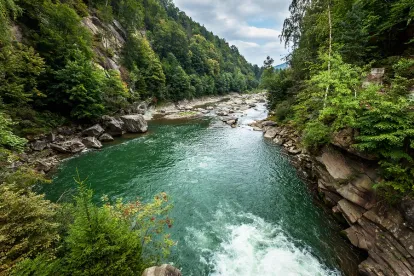On June 17, 2017, the State Water Resources Control Board (State Board) published proposed amendments to the Ocean Plan and the water quality control plan for Inland Surface Waters and Enclosed Bays and Estuaries and Ocean Waters of California to adopt procedures for discharges of dredged or fill material to waters of the state that are not protected by the federal Clean Water Act (CWA). In addition to the proposed amendments, the State Board also published a detailed staff report and a separate comparison of the new “State Supplemental Dredged or Fill Guidelines” to the CWA’s Section 404(b)(1) Guidelines, which requires sequencing of impacts to avoid, minimize, and mitigate impacts to waters. Two workshops and a public hearing are scheduled in June and July, with the public comment period ending on August 4, 2016. The proposal is tentatively scheduled to be considered by the State Board in the fall of 2016.
The publication of the proposed amendments and related materials is the latest development in a program the State Board has been working on since 2007 in response to Supreme Court decisions narrowing the scope of aquatic resources subject to the CWA. The State Board had previously referred to its proposed wetland permitting program as the Water Quality Control Policy for Wetland Area Protection and Dredged or Fill Permitting. The State Board believes the program will help address an inconsistency across the nine Regional Water Quality Control Boards (Water Boards) in requirements for discharges of dredged or fill material into waters of the state, including wetlands and will help prevent losses in the quantity and quality of wetlands in California.
The proposed amendments include
- (1) a wetland definition,
- (2) wetland delineation procedures, and
- (3) procedures for applications, and the review and approval of Water Quality Certifications, Waste Discharge Requirements, and waivers of Waste Discharge Requirements for dredged and fill activities.
The proposed wetland definition is similar, but not identical, to the federal definition in the CWA. The State Board asserts that the proposed definition is intended to provide clear and consistent direction for determining whether an aquatic feature is a wetland but does not affect the meaning of “waters of the state” as it pertains to the Water Boards’ jurisdiction pursuant to the Porter-Cologne Act, nor does it modify the current authorities of the Water Boards to protect water quality. Rather, a statewide wetland definition would provide consistent identification standards for certain types of aquatic features that are sometimes difficult to identify in the field, and for which current policy does not provide adequate guidance.
The proposed wetland delineation procedures incorporate U.S. Army Corps of Engineers’ (Corps) CWA delineation procedures and guidance materials to determine if an area meets the wetland definition, with slight modifications. The proposed amendments state that the Waters Boards must rely on any wetland delineation approved by the Corps for purposes of determining the extent of waters of the U.S. For non-federal wetland areas, the Water Boards are directed to use the Corps’ 1987 delineation manual and two regional supplements covering California to determine whether an area meets the State Board’s definition of wetland, except that the lack of wetland vegetation does not preclude an area being a wetland under state law.
The new application procedures would apply to discharges to waters of the state, including waters subject to federal jurisdiction, for all application submitted after the amendments become effective. Notable requirements deal with alternatives analysis and mitigation.
Under guidelines developed by the EPA pursuant to Section 404 of the CWA, the Corps cannot permit a project unless it determines it is the least environmentally damaging practicable alternative, or LEDPA. For waters subject to federal jurisdiction, the Water Boards are directed to defer to the Corps and EPA’s determination unless the Water Board makes one of the following findings: (1) the Water Board was not afforded an opportunity to consult during the development of the alternatives analysis; (2) the Corps’ alternatives analysis does not adequately address issues raised by the Water Board during the consultation; (3) additional analysis is requires to comply with CEQA, water quality standards, or other requirements; or (4) the project and all of the identified alternatives would not comply with water quality standards. If a project includes both federal and non-federal waters, the Water Boards may require the applicant to supplement the alternatives analysis to include waters of the state outside of federal jurisdiction. If the project solely involves water of the state that are not subject to federal jurisdiction, Water Boards may require an alternatives analysis in accordance with the Sate Supplemental Dredged or Fill Guidelines, which are excerpted from the EPA’s Section 404(b)(1) Guidelines and included as an appendix to the proposed amendments.
Mitigation requirements are also incorporated from the Corps and EPA’s 2008 Mitigation Rule. This is a change from prior drafts of the Water Quality Control Policy for Wetland Area Protection and Dredged or Fill Permitting, which had proposed mitigation requirements and criteria that were at odds with those required by the Corps.



 />i
/>i

